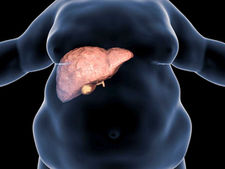
Nerve Compression
What is Nerve Compression?
Every nerve in the body is involved in the control of anatomical and physiological functions in various regions and the perception of sensations in these regions. When any entrapment occurs in the nerves that perform these functions on the skin surface and musculoskeletal system, abnormal electrical responses may occur instead of normal nerve functions.
Nerve compression is defined as a nerve being exposed to pressure due to surrounding tissue elements such as muscle, at a level that impairs its functions. This compression may directly affect the nerves coming out of the spinal cord, or it may also affect the nerve sections in the limbs, causing complaints such as pain, tingling, loss of sensation, numbness and weakness.
Arthritis (joint inflammation) and trauma are the main causes of nerve compression. Although nerve compression is usually a temporary condition, care should be taken as it may have a more severe course in some people.
What are the symptoms of nerve compression?
Burning sensation in the affected area, tingling that can be felt like a mild electric shock, pain radiating from the compressed nerve to the area, loss of sensation on the skin, decrease or loss of skin sensations such as pain, temperature and touch, weakness in the muscles in the affected area.
What are the Treatment Methods for Nerve Compression?
Nerve compression treatment is basically divided into two main groups: surgical and non-surgical treatment. Non-surgical treatment methods include medication, lifestyle changes and physical therapy.
Avoiding movements that trigger pain, ensuring ergonomic working conditions at home and at work, or choosing jobs with different job descriptions instead of jobs that worsen complaints are among the lifestyle changes that can be made to control nerve compression.
Reducing body weight may contribute to the improvement of complaints in nerve compression caused by reasons such as obesity. Physical therapy practices aim to increase flexibility, strength and range of motion in the affected area of patients.
These applications can also improve symptoms such as pain and numbness. In some cases of nerve compression in the limbs, splint applications may be beneficial to prevent unintentional forced movements while sleeping at night.
Non-steroidal anti-inflammatories or corticosteroid-derived drugs are among the medications prescribed by physicians for people with nerve compression. These drugs help reduce edema and suppress inflammation in the area where the nerve is compressed.
In advanced cases where non-surgical treatments fail to yield results, various regional relief surgeries may be used. In these surgeries, the affected nerve and the point where it is affected are determined, and some of the connective tissue or soft tissue in this area can be removed to reduce the pressure on the nerve.
FOR INFORMATION AND APPOINTMENT, YOU CAN LEAVE YOUR NUMBER OR ASK OUR EXPERTS
YOU CAN LEAVE YOUR NUMBER FOR INFORMATION AND APPOINTMENT AND ASK QUESTIONS TO OUR EXPERTS



-04.png)
-06.png)
-05.png)
-08.png)
-07.png)























